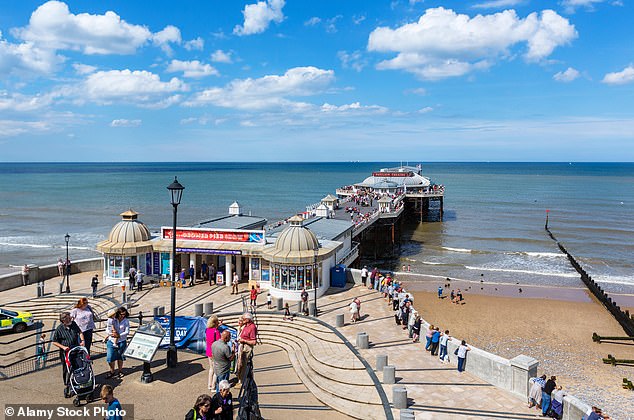Walking along the beach with the bright blue waters of the Caribbean lapping at your feet is the kind of vacation many can only dream of.
But now it’s possible much closer to home: in Norfolk.
Visitors to the seaside resort of Cromer are awed by the dazzling pale blue colour of the sea and compare it to a tropical paradise.
Authorities have revealed that the extraordinary transformation from the usual grey and monotonous colour of the North Sea is due to works on the area’s coastal defences.
Workers digging into the seabed beneath the beach have exposed a layer of chalk sediment that is mixing with the water above and changing its hue.
Visitors to the seaside resort of Cromer were amazed by the dazzling pale blue colour of the sea.
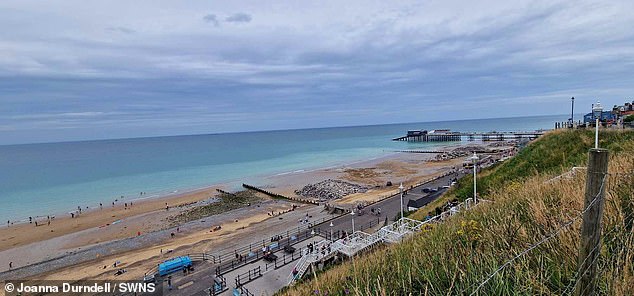
Authorities have revealed that the extraordinary transformation from the usual grey and drab colour of the North Sea is due to work on the area’s coastal defences.
Among the visitors marvelling at the spectacle was Suzanne Allsopp-Franklin, who was hiking at the resort with her family and said: “The water looked amazing… so beautiful and nothing like I’d ever seen before.”
Another tourist, Joanna Durdell, added: “I spent a lot of time there with my grandparents when I was a child and I’d never seen the sea in such a strange shade of blue.”
Contractors are building a revetment, or seawall, to reinforce the shoreline between Cromer and Mundesley a few miles away.
The leaning structure is made of rocks brought by barge from a Scottish quarry and will absorb the impact of waves and protect the seawall behind it.
Workers are digging a hole up to 15ft deep to create a secure base for the revetment, which is located in an area known as the Cromer Shoal Chalk Beds, the world’s longest chalk reef, stretching more than 20 miles along the coast from Weybourne to Happisburgh.
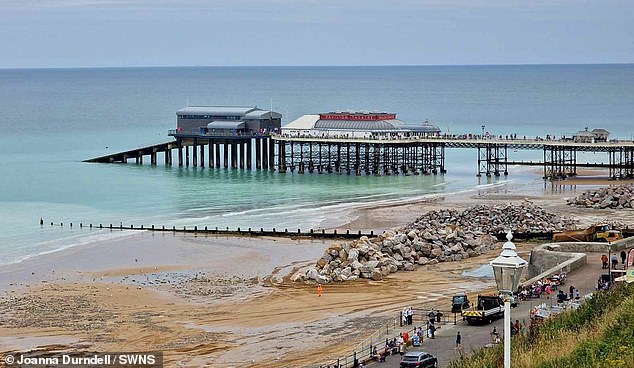
Pictured is a general view of the coastline at Cromer, Norfolk. Visitors and locals alike were impressed by the blue waters.
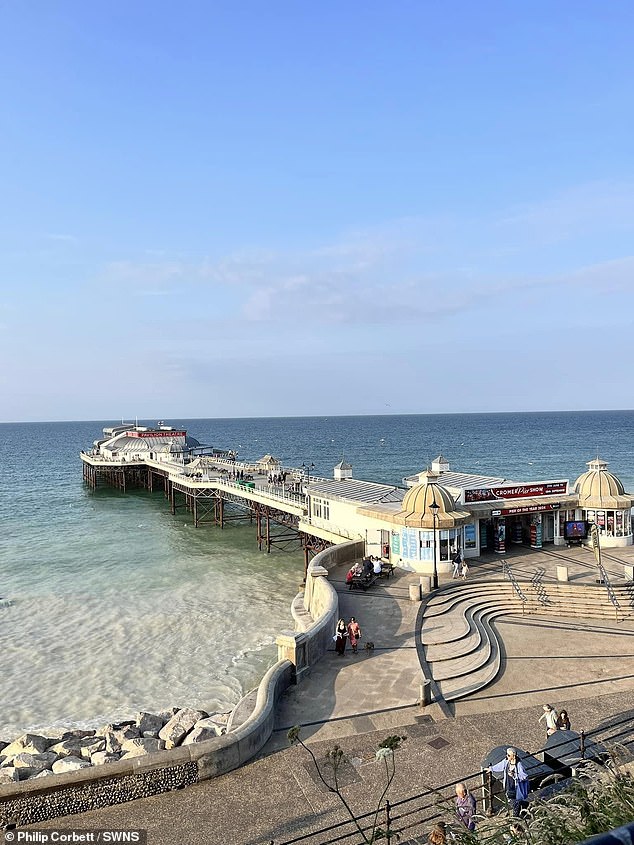
Workers digging into the seabed beneath the beach have exposed a layer of chalk sediment that is mixing with the water above and changing its hue.
The rugged seabed, designated a Marine Conservation Area in 2016, creates the perfect habitat for Cromer’s famous crabs, providing a livelihood for local fishermen and hours of fun for excited children armed with buckets and lines.
However, while the Caribbean feel of the sea will be complemented by blue skies over the weekend and temperatures of 25°C on Monday, it will unfortunately not last.
A spokeswoman for North Norfolk District Council said: ‘The change in sea colour at Cromer is due to chalk beneath the beach.
‘The rock is being cemented into the chalk layer, which requires excavations up to 4.5 m deep to place the rock.
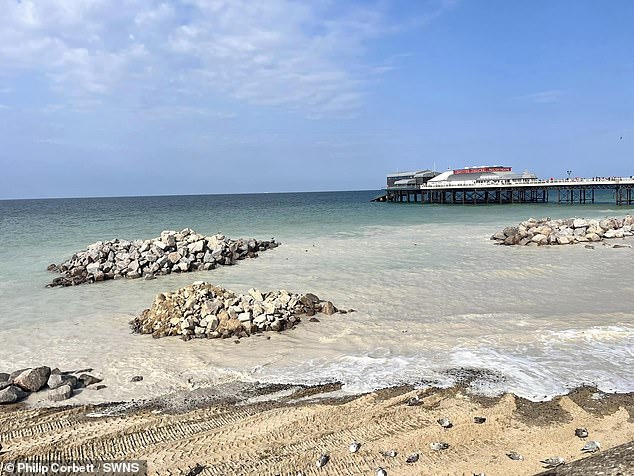
Cromer became a fashionable resort in the early 19th century, with visitors including Edward VII.
“These are natural sediments that do not negatively affect water quality. They simply make the water lighter in colour, which is especially noticeable with recent exposure to the sun.”
Cromer became a fashionable resort in the early 19th century, with Edward VII among its visitors.
It features in novels such as Jane Austen’s Emma and Elizabeth Gaskell’s North and South, and notable local figures include the inventor Sir James Dyson, who was born there.
Attractions include the late Victorian pier, which is 495 feet long and houses the Pavilion Theatre.
(tags to translate)dailymail


